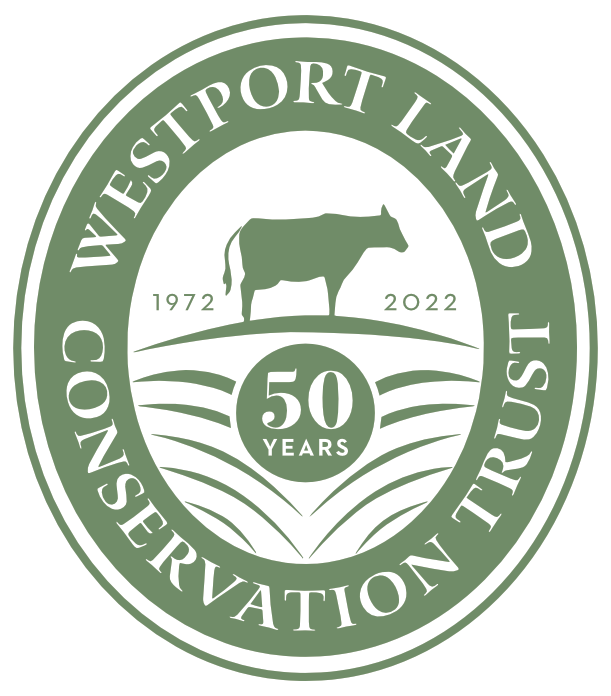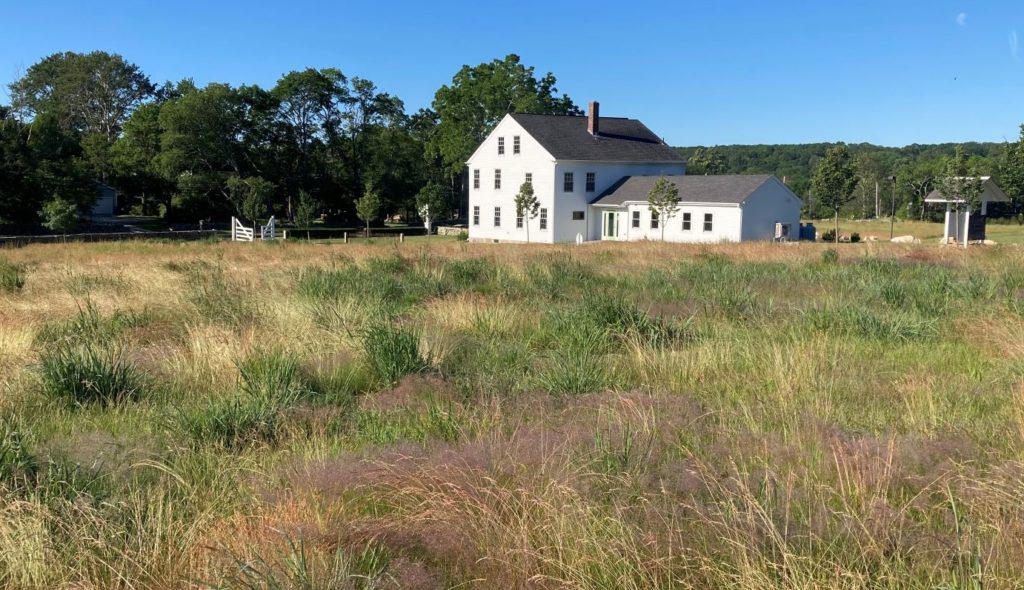
A meadow is an area of open land, dominated by grasses and flowering plants, but nearly empty of woody vegetation such as trees or shrubs. There are many advantages to planting native grasses. A wild field of meadow grasses can provide food and cover for animals, enrich the landscape, and prevent erosion. This habitat is great for insects, which in turn adds to the biodiversity of the ecosystem. Insects pollinate plants, disperse seeds, cycle nutrients, and maintain soil conditions. They also are the base of the food pyramid and are a great source of nutrition for other species.
There are several bird boxes in the meadows, where Eastern Bluebirds make their homes. They are ground feeders, eating bugs, grasshoppers, and worms. They venture to the forest edges to find to shrubs that produce small fruit. The meadow is also often visited by Redtail Hawks that hunt from great heights, soaring above searching for the many voles, field mice, rabbits, and squirrels; as well as snakes and smaller birds. Walking around the paths at Westport Woods it is easy to sense that the meadows are booming with life. Even if you can’t see all of the action behind the tall clumps of grass waving in the wind, you can often hear a symphony of bugs buzzing around just out of view.
Here is a list of the major grasses that make up the meadow at Westport Woods:
- Little Bluestem Schizachyrium scoparium (Andropogon scoparius)
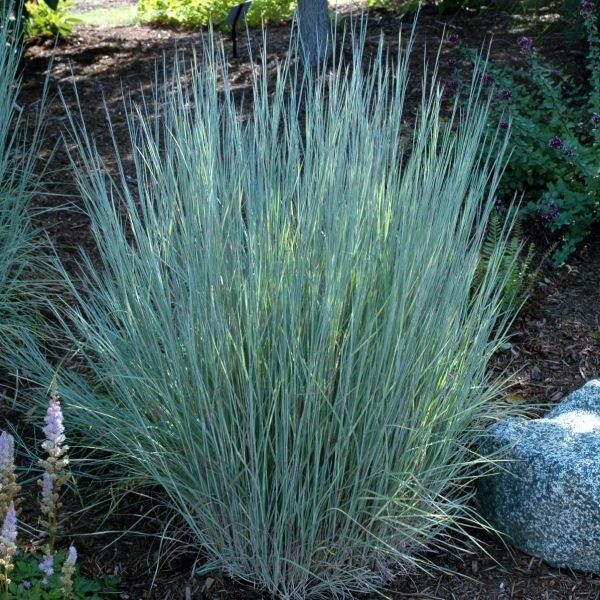
Grass Family – Poaceae
1 ½ – 5ft.
Perennial, Bloom Time July-October; dried stalks persist through the winter
Colors proceed through the season from blue-green to wine-red, steel-gray, and golden brown. Found in prairies, roadsides, old fields, dry sandy or rocky soil.
2. Big Bluestem (Andropogon gerardii) Nicknames: Turkey claw, beardgrass
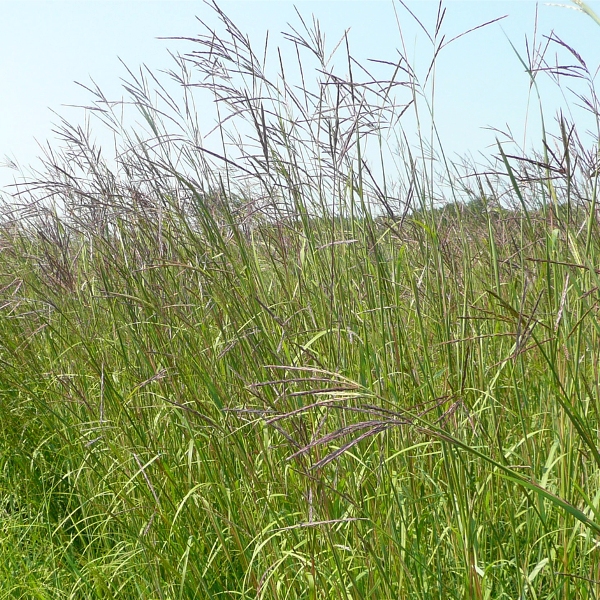
Grass Family – Poaceae
2 ½ – 10 ft.
Perennial, Bloom Time August-October
In flower, the inflorescence varies from bronze to a steely gray-blue; later the whole plant turns shades of red, brown, and purple. Tolerant of heat, drought, and fire, big bluestem was the dominant grass of the tall prairie. It was the favorite grass of the American Bison because it is the tallest and grows in clumps.
3. Switch Grass (Panicum virgatum)
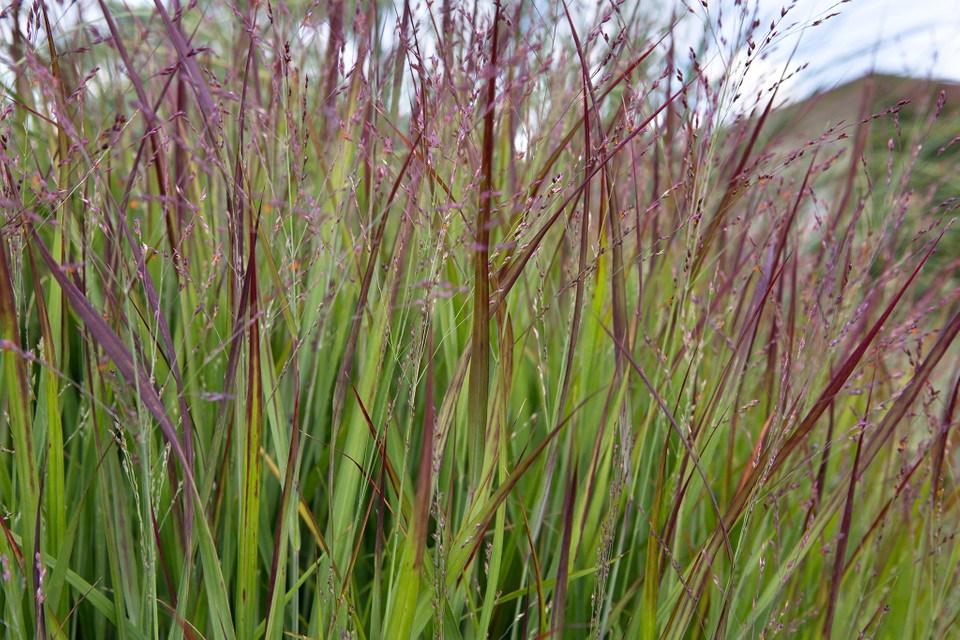
Grass Family – Poaceae
2-6 ft.
Perennial, Bloom Time July – September
Found in prairies, meadows, shores, upper edges of salt marshes, roadsides. Grows in big leafy clumps. Switch grass has lent itself to the development of countless cultivars for agriculture, horticulture, and bio-energy, with strains being selected for size, color, disease resistance, nutrient content, and other characters.
4. Indian Grass (Sorghastrum nutans)
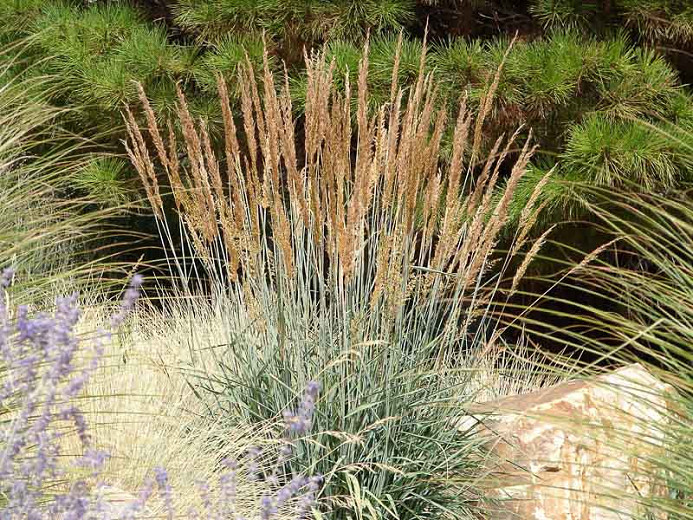
Grass family – Poaceae
3-7 ft
Perennial, Bloom Time August-September
Found in prairies, roadsides, and fields. With roots going as deep as 9 feet, it is drought tolerant and, like the other prairie species, grows back vigorously after a fire. They are tall and have a rough texture to them. They become yellowish bronze in the fall and becomes dormant in the winter.

